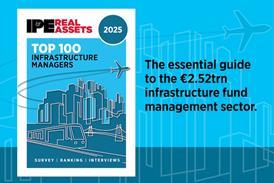Inrev, the European association for investors in non-listed real estate vehicles, is proposing a fundamental overhaul to the way in which investment styles are defined for Europe's EUR 400bn non-listed real estate funds industry. The association has released a white paper which outlines an empirical approach to revising the existing Inrev Styles Framework which classifies funds as core, vale added and opportunity.
Inrev, the European association for investors in non-listed real estate vehicles, is proposing a fundamental overhaul to the way in which investment styles are defined for Europe's EUR 400bn non-listed real estate funds industry. The association has released a white paper which outlines an empirical approach to revising the existing Inrev Styles Framework which classifies funds as core, vale added and opportunity.
The white paper is based on research carried out by a team at CASS Business School, led by professor Tony Key and Stephen Lee, and has been prepared under the guidance of the Inrev Styles Working Group. The aim of the initiative was to revise the current style definitions and to address whether these stand up to Inrev's key requirements for any classifications to be 'enduring, robust and workable.' The white paper takes the view that style is a bundle of risk factors and sets out six quantitative risk factors which it recommends are the key determinants of style. These are leverage, development, income distribution as a percentage of total return, country exposure, sector exposure and diversification.
The white paper does not recommend a framework which immediately classifies funds using these factors as metrics but instead proposes a period of data gathering and analysis to examine how these risk factors relate to current fund styles as outlined by fund managers in the Inrev Vehicle Database. This period of analysis is expected to result in key characteristics of core, value added and opportunity funds which will give the industry a better
understanding of typical characteristics for these styles which can then be used to create a framework for style classification for new funds. This process is expected to take up to two years.
'The white paper offers an innovative solution to revising style classifications. It demonstrates that the best way to reach a robust and enduring solution is to fully explore and understand the determinants of style before setting them in a framework,' said Bernhard Berg, member of the management board of Inrev and CEO of AMB Generali Immobilien. The proposals are an update to the existing styles framework created in 2004, which classifies funds based on target internal rate of return (IRR) and target leverage.
Inrev is seeking feedback on the white paper from the industry, which should be sent to the association by Friday 18 July. You can find the white paper by clicking on the link below for the Inrev website..










